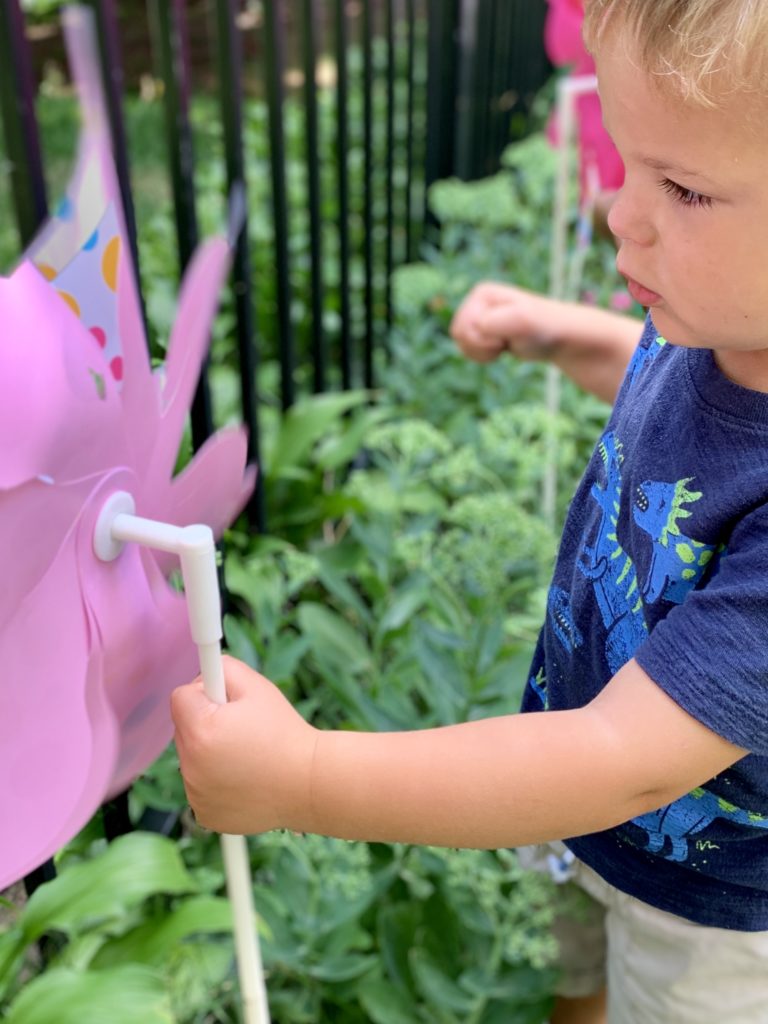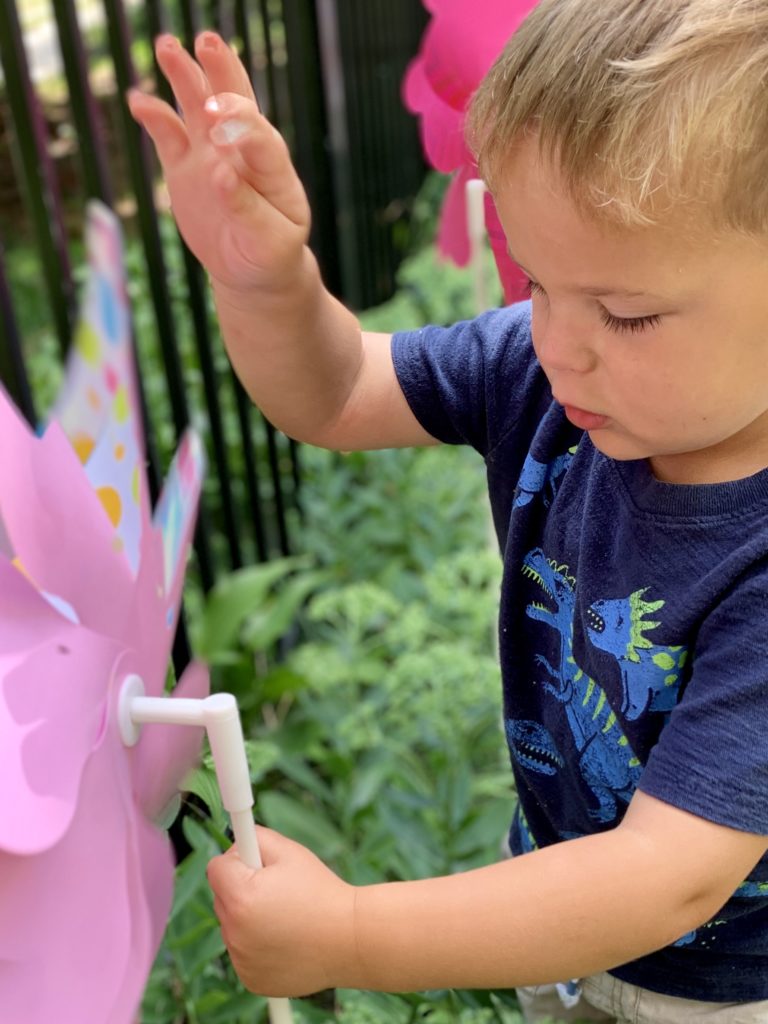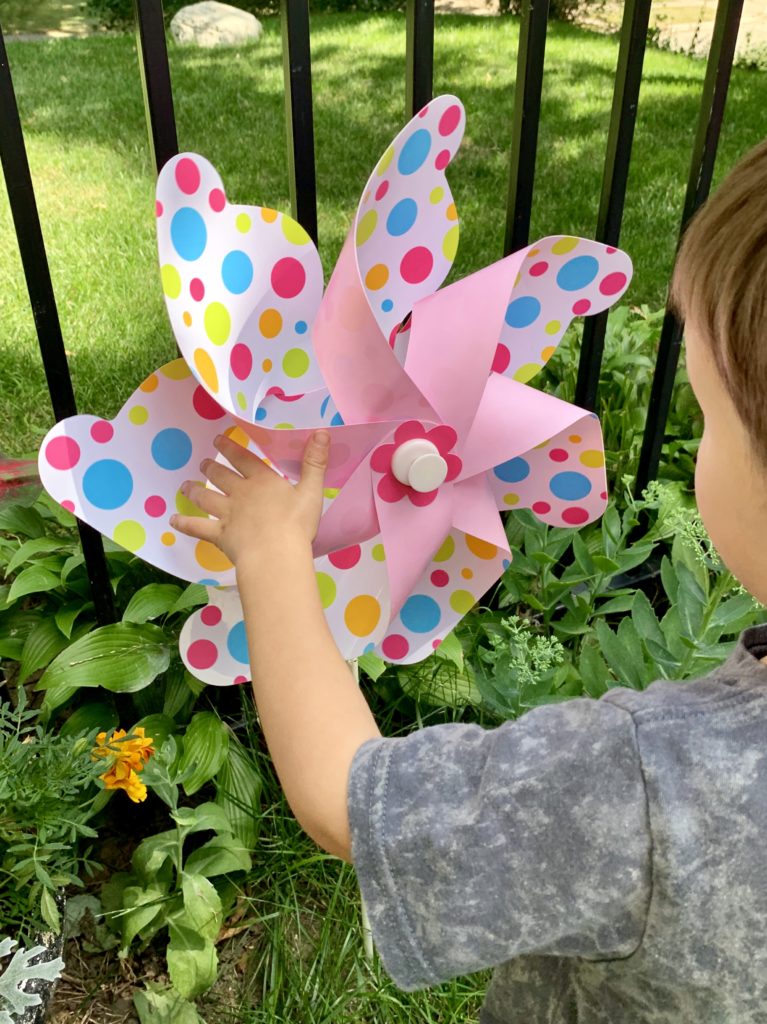Spin Into STEM: Early Engineering with Pinwheels!

“Wow! Look how fast the pinwheels are spinning!” says Harper in wonder.
This windy spring morning has Harper and his fellow STEM explorers racing toward the pinwheels in our outdoor play area.
“They are really, really fast today,” agrees Jasper.
“They move faster on windy days," notes Noah. “You can stop them and then watch how fast they start up again.”
This moment of play has sparked our next big engineering investigation as the children begin to explore the pushing force of the wind.
Outdoor activities have once again set the stage for hands-on learning. This time, it’s all about discovering how wind speed and direction affect the movement of a simple machine—the pinwheel. Through this engineering activity, the children are learning the core engineering principles of force, resistance, and motion.
Children are naturally curious. Today, that curiosity is the driving force behind their early engineering adventure.
As they experiment, collaborate, and observe, Harper, Jasper, and Noah are engaging in hands-on learning that touches on science, technology, engineering, and math (STEM).
What better place to explore these concepts than right in our own outdoor classroom?

“If I blow on this side of the pinwheel, it won’t spin," Jimmy observes. "I have to blow on the other side into that little spot right there,” he explains, pointing to the spot with his pudgy index finger.
“I am blowing on it and it isn’t moving at all!” Eve counters. “Why won’t my pinwheel move?”
We look over and notice that Eve is blowing directly onto the front of her pinwheel.
“You can’t make it move that way,” Noah explains to Eve. “Look! When I blow from the side, the air from my mouth pushes on the pinwheel to make it spin. Blow onto this side over here.”
As the children test out their ideas and refine their methods, they are engaging in the engineering design process—a foundational skill in early engineering.
They are hypothesizing as they ask, "What happens if we blow from different angles?"
They are testing as they suggest, "Let's try it and see."
They are observing as they wonder,"Why is this side moving faster?"
They are refining their methods as they say, "Let’s see if changing how we blow affects the spin."
Our little STEM explorers are also discovering how wind speed and direction affect the movement of the pinwheels (and learning about cause and effect in the process).
“I saw these gigantic pinwheels when we drove to grandma’s house!” shares Sally, who just joined in on the pinwheel play. “They were all white, but they were giant! They weren’t as fast as these. Maybe big pinwheels go slower?”
“Those are wind turbines!” shouts Noah. “I’ve seen those too! They help give the farmers and the town light and heat.”

“I can push the pinwheel with my hand and it goes this way,” says another child. “If I pull on this side, it goes that way.”
This conversation is not just about pinwheels—it’s a full-on engineering discussion! The children are comparing the simple pinwheel to much larger machines (like wind turbines) and drawing conclusions about the different ways that wind can be used for power.
They’re also experimenting with force and motion as they adjust how they interact with the pinwheels.
By alternating between pushing and pulling, the children explore the concepts of force and motion while using engineering terms like “push,” “pull,” “change direction,” and “speed” to describe their observations.
These spontaneous STEM explorations in a real-world context are teaching them to think like engineers while they build their language skills.

This is rich, authentic learning in action.
Not only are the children learning about wind, but they’re also gaining valuable engineering skills. They're testing hypotheses, refining their designs, and discussing how and why their experiments succeed or fail. These are the building blocks of early engineering!
In an outdoor environment, unplanned moments like these offer children endless opportunities to explore, experiment, and create their own curriculum.
I can’t help but marvel at how much they’re learning. Playing with pinwheels in the wind is more than just fun—it’s an essential engineering experience!